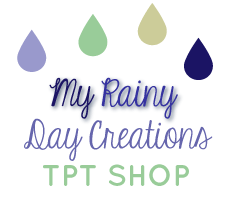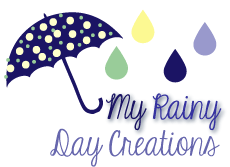Third grade is a big fractions year. Last year my third graders came to me having a very solid understanding of fractions. This year... not so much. It wasn't that they had misconceptions - they just didn't know anything about fractions.
Luckily, they did come to me with very solid number sense. Our school is in its third year of common core standards and it shows with these kids. They have a deep understanding of numbers and how they can be manipulated under different circumstances.
I think this understanding is a big part of their success with this brand new concept. It is also my third year teaching fractions which hopefully means that I am teaching them better as well.
We started fractions last week with fraction strips. I have a magnetic set of fraction strips on the board and the kids were given paper to fold/cut. I let the kids who felt confident work independently. The rest of the class joined me on the carpet for some fun folding time.
First came halves. That was easy - fold the paper in half and then cut along the fold. We ended up with two equal pieces or two halves. Then we were ready for fourths. We folded a piece of paper in half and cut it again. Then we folded these two pieces in half and cut them. Four equal pieces or fourths. Repeat with eighths.
Then we get to thirds. That was tough. I did my best to show them how to place the ends of the paper on top of each other until they lined up in three equal pieces. Some of the kids got it, and some weren't ready yet. :) After thirds we folded sixths.
For homework that night they took home a worksheet from Super Teacher Worksheets on basic fractions - one piece out of six colored in means 1/6.
As a side note - I love Super Teacher Worksheets. I use them all the time for homework or class practice. They have worksheets on a ton of topics and fun worksheets for early finishers.
Anyway, once we were clear on what a fraction was (it took us about two days) we were ready to move on to equivalent fractions. We talked a lot about how equivalent meant the same size. They were able to find equivalent fractions using fraction strips. We have a class set of the plastic fraction strips from Lakeshore Learning. This was very helpful because we found that many of the students' paper fraction strips did not have equal pieces.
We used the fraction strips to compare fractions as well. In about a week and a half my students went from knowing basically nothing about fractions to being able to find equivalent fractions and compare fractions using the fraction strips. Unfortunately they can't use the fraction strips on any testing, so we would have to move away from these manipulatives.
We spent some time drawing fractions (halves, fourths, eighths, thirds, and sixths) on rectangles. We haven't done circles yet, but we will. Rectangles alone are very difficult for my students. They always have to ask me if they have equal pieces. It makes me wonder, can they not see if they are equal or not? My best guess is that they know it isn't very equal, but they want to know if the pieces are equal enough. :)
This week we moved on to numbers on a number line. I am embarrassed to say it, but this has been a weak point in my teaching the past couple of years. Both years I thought the kids would understand it right away, but they didn't. Then, it was really hard to figure out where they were having trouble. I just gave them too much at once I think.
So, this year I was really careful with how I introduced fractions. We started with an organic number line. I don't know where the original idea came from for the organic number line, but it is something we borrowed last year during a planning day. I had already started teaching fractions on a number line before we had the planning day, so we only started using the organic number line after struggling with fractions.
The idea of the organic number line is that the students build it. I strung a piece of string across a bulletin board in the classroom. Then I talked about how the number line is a model to show our thinking about fractions. I related it to a rectangle as we placed 0/2 and 2/2. Then a student placed 1/2 right in the middle.
We were ready for a challenge, so some students placed the fourths as well. It was amazing to hear the comments from students as we worked. They were making connections between what they already knew and the number line. They made predictions about where other fractions would go. They were able to kindly explain why a specific placement was right or wrong. They were incredible sticklers for having equal spaces between the numbers. I may have created some monsters.
Our number lines continue to go well. I skipped the first lessons in Engage New York (or Eureka Math) for Module 5 (Fractions) because I didn't think they made a lot of sense. The number line part of the module is really strong, so we used lessons 14-20 to study number lines in addition to the organic number line.
Next week we will continue with the Engage NY lessons - we need to cover lessons 18 - 20 - and then we will start working on comparing fractions and finding equivalent fractions using number lines. I personally think that the number line is the easiest model for students to draw well (and quickly), so I think this will be an important step in our fractions unit.
One other thing I did for the fractions unit was to make a fraction mini-book for every student. It covers every standard that they are expected to know under common core.
You can visit the product page my clicking the picture below.
Well, that is where we are with fractions right now. We have also been playing some games. I will post about those another time.
Have a great weekend!
Subscribe to:
Post Comments (Atom)





No comments:
Post a Comment